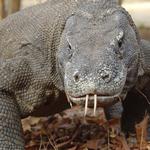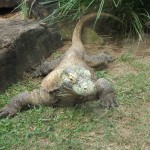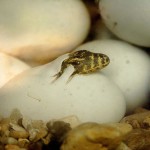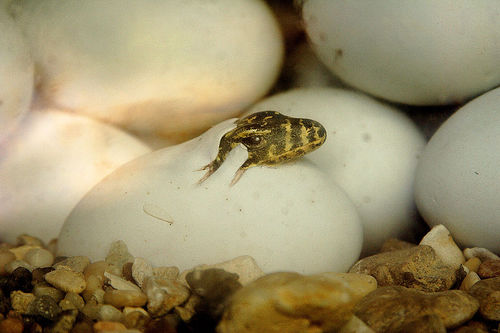 The dragon is both revered and feared in many cultures around the world. This year the Chinese will celebrate the upcoming new year as the Year of the Dragon. A symbol of strength and royalty, you can find interpretations of these mythical beasts adorning clothing, wall tapestries, statues, and even etched into flesh. But what do we know about our last remaining dragon, the Komodo dragon, which still walks the earth? What is being done to conserve this magnificent creature and its habitat to ensure that it too remains immortalized?
The dragon is both revered and feared in many cultures around the world. This year the Chinese will celebrate the upcoming new year as the Year of the Dragon. A symbol of strength and royalty, you can find interpretations of these mythical beasts adorning clothing, wall tapestries, statues, and even etched into flesh. But what do we know about our last remaining dragon, the Komodo dragon, which still walks the earth? What is being done to conserve this magnificent creature and its habitat to ensure that it too remains immortalized?
Weighing in at up to 100 kg (220 lbs) and measuring 3 m (9 ft) from nose to tail, the Komodo dragon is considered the world’s largest lizard. Although a stable population of 3,000-5,000 individuals can be found on the Indonesian Islands of Komodo, Gila Motang, Rinca, and Flores, overall the dragon is considered endangered. The Komodo dragon is the apex predator in its ecosystem feeding on everything from carrion, deer, feral pigs, smaller dragons, and buffalo. Ferocious predators, in one sitting, the Komodo can consume 80% of its body weight! Even more fascinating is that parthenogenesis has been documented in this species. Several zoos around the world have observed single females laying viable eggs that she fertilizes herself, sans male partner. A side note is that in every case the eggs hatched yielding only male offspring. This incredible reproductive process allows for females to enter an isolated ecosystem and produce offspring that can become founding members of a new population. However, caution is warranted as scientists do not yet know the detrimental effects this may have on genetic diversity.
Although a stable population of 3,000-5,000 individuals can be found on the Indonesian Islands of Komodo, Gila Motang, Rinca, and Flores, overall the dragon is considered endangered. The Komodo dragon is the apex predator in its ecosystem feeding on everything from carrion, deer, feral pigs, smaller dragons, and buffalo. Ferocious predators, in one sitting, the Komodo can consume 80% of its body weight! Even more fascinating is that parthenogenesis has been documented in this species. Several zoos around the world have observed single females laying viable eggs that she fertilizes herself, sans male partner. A side note is that in every case the eggs hatched yielding only male offspring. This incredible reproductive process allows for females to enter an isolated ecosystem and produce offspring that can become founding members of a new population. However, caution is warranted as scientists do not yet know the detrimental effects this may have on genetic diversity.
You would think that by its size and fierceness, the Komodo dragon would be a formidable opponent for all challengers, but this is not the case. Human encroachment and poaching threatens the survival of the Komodo on every island that it inhabits. Indirectly, natural disasters such as volcanic activity, earthquakes and fires, loss of prey due to poaching, and negative effects from unsustainable tourism have all contributed to a decrease in dragon numbers. In addition, it has currently been reported that out of the total population there may only be ~300 reproducing females.
Human encroachment and poaching threatens the survival of the Komodo on every island that it inhabits. Indirectly, natural disasters such as volcanic activity, earthquakes and fires, loss of prey due to poaching, and negative effects from unsustainable tourism have all contributed to a decrease in dragon numbers. In addition, it has currently been reported that out of the total population there may only be ~300 reproducing females.
 As with any conservation effort, the hardest part is trying to identify the most effective way to begin. From a conservationist point of view, the population needs to continually be monitored so that any changes are immediately known. It is also important to characterize the genetics within the current population to detect genetic bottlenecks. Environmental education programs are needed to help local people living in Komodo habitat understand the importance of the dragon and why they are beneficial in the ecosystem. In addition, increased legislature is needed to protect the Komodo dragon and presence of wardens required to help prevent poaching of dragons and their prey. However, regardless of conservation initiatives, none of these things can be accomplished without public support. Monetary donations are essential to fund conservation projects. Additionally, awareness, education, and support to conserve Komodo dragons and their habitat via volunteering, word of mouth, or community involvement are imperative to get others to care about the plight of such an amazing creature. Let us all work together to make every year the Year of the Dragon.
As with any conservation effort, the hardest part is trying to identify the most effective way to begin. From a conservationist point of view, the population needs to continually be monitored so that any changes are immediately known. It is also important to characterize the genetics within the current population to detect genetic bottlenecks. Environmental education programs are needed to help local people living in Komodo habitat understand the importance of the dragon and why they are beneficial in the ecosystem. In addition, increased legislature is needed to protect the Komodo dragon and presence of wardens required to help prevent poaching of dragons and their prey. However, regardless of conservation initiatives, none of these things can be accomplished without public support. Monetary donations are essential to fund conservation projects. Additionally, awareness, education, and support to conserve Komodo dragons and their habitat via volunteering, word of mouth, or community involvement are imperative to get others to care about the plight of such an amazing creature. Let us all work together to make every year the Year of the Dragon.
